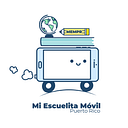These last few days, months, or years, you have thought at some point where you would not take your mobile. I mean, because for me, it’s always present… my cellphone is next to the bed, in the bathroom, at the car, at work, near my hand or in it. It’s there for almost 24 hours a day, 7 days a week and 365 days a year.
Yes! You have embraced your phone, I know.
I remember that at first the cell phone had the sole purpose of calling and just that, back in the ’80s. Later on it allowed us to connect to the internet and today it includes several applications that help us communicate and make transactions wirelessly as fast as a computer.
But, are you empowered by the mobility your mobile phone allows you to learn?
We recognize that mobile equipment is always used everywhere anytime. Still, I will be sharing information that will help you recognize how empowered you are of mobility for learning and what you apply to your daily life.
Mobility in mobile learning refers to the student’s on-the-go availability for communication, information search, and media usage to learn task delivery. In rice and beans (this is an expression in Puerto Rico for: simply explained): it is how we can manipulate or use in our favor smart mobile equipment that has an internet connection and that we can use everywhere when it comes to learning.
It is important that we briefly see the general advantages and disadvantages offered by mobile equipment, specifically the cell phone, according to educational research.
How do we embrace mobility for learning processes?
We must as parents, teachers and instructional designers, study, plan, know our students, their needs, and skills before implementing educational processes mediated by mobile teams, if we want to be timely.
For example, if you are a schoolteacher, mobility can manifest when a student searches for information to complete a task. A specific case could be that the assignment is to solve a math problem. The teacher explains the process, and the skills it requires. Then, to supplement the activity, asks the student to use a math mobile application to corroborate the results and processes. There are endless mobile applications, where the student solves the mathematical problem in seconds. These applications explain the processes and skills for the solution. This is another way for the student to learn the procedures.
Another example is that a student’s grammar skills can be evaluated by asking them to develop a writing (syllables, words, sentences, paragraphs, essays) using a mobile application no matter the age. A rubric (according to their level, grade, or group) can be used as an assessment. The student should follow the instructions in it to complete the task.
The cell phone is an instrument that facilitates the learning process. By this I mean, to see the cell phone or mobile equipment as an ally to mobility.
I appreciate you following my blog, commenting, and sharing them to all those you love.
I’ll wait for you around here like every Wednesday at 6PM, follow me on my networks to keep you informed.
I read them in your comments. Good night all!
Ivelisse, Instructional Designer
